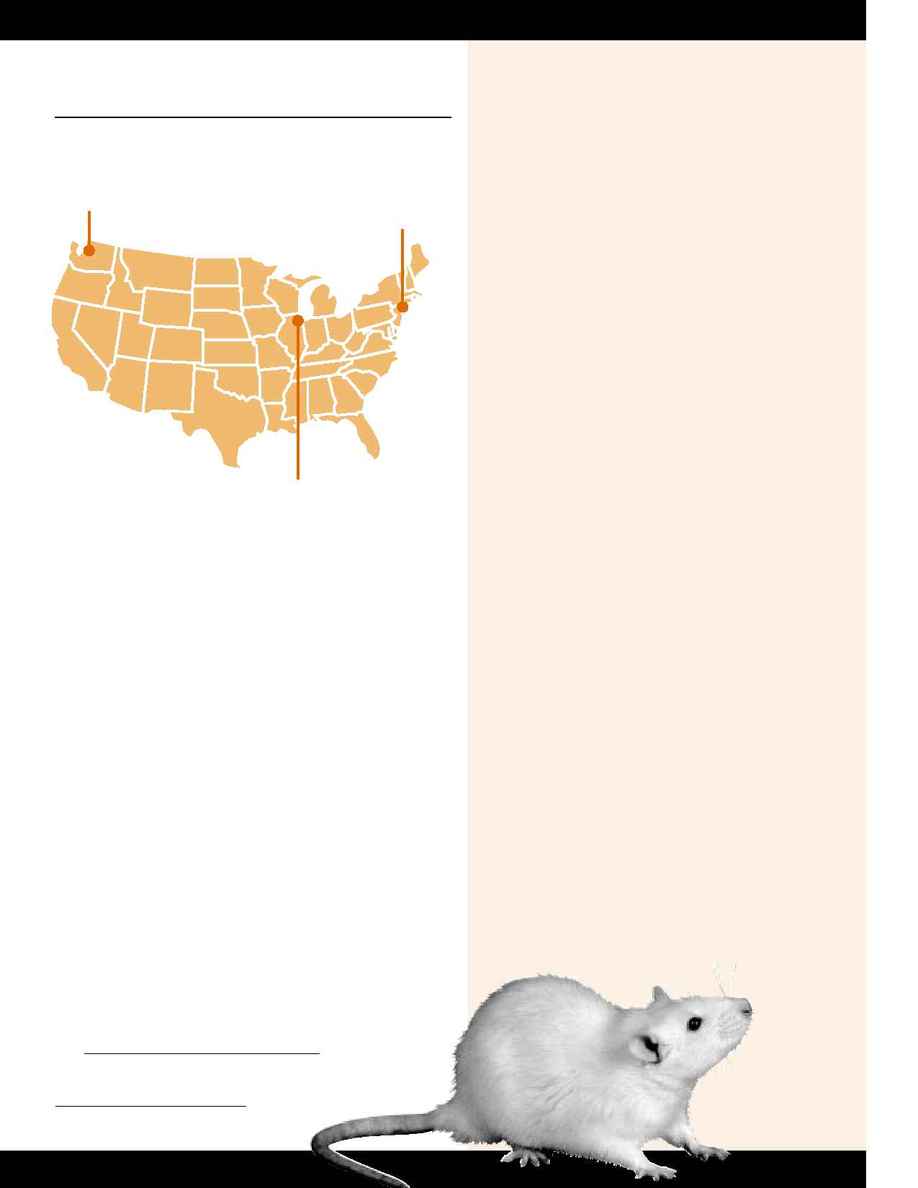
4
www.biosis.org
Vol. 9 Issue 3 2002
BIOSIS Evolutions
Over the past 40 years, concern for the welfare of
animals has increasingly become a part of the public
consciousness. Laws have mirrored this sentiment, and
consequently the Animal Welfare Act has been repeatedly
amended to provide more protection for the well being of
laboratory animals. One attempt at minimizing animal
experimentation relies on the comprehensive coverage of
BIOSIS databases, which can help locate non-animal
experiments that offer equivalent data to researchers.
Animal welfare regulations include specific guidelines for
finding alternatives to animal laboratory experiments. If
primary investigators expect to sacrifice animals in their
research, they must first demonstrate that no experiment
could produce the same data without sacrificing an animal.
To prove this, researchers must document that they've
conducted a thorough search of the literature for a
suitable alternative to animal experimentation, and have
been unable to locate one.
The law must ensure that these searches are indeed
thorough, so the regulations stipulate which databases
can be used. BIOSIS Previews and Zoological Record are
among the officially designated databases listed by the
Animal Welfare Information Center part of the United
States Department of Agriculture (USDA). BIOSIS
databases offer researchers contextual indexing that
makes searching more efficient, as well as comprehensive
international coverage.
To find more information on the benefits of searching for
animal alternatives on BIOSIS databases, visit the BIOSIS
website at
www.biosis.org/training_support/workshops/index.html.
Looking for Alternatives to
Animal Research?
The USDA Suggests BIOSIS
(Anoplophora chinensis) has been captured near Seattle in the
northwestern United States.
The Washington State Department of Agriculture has proposed
cutting down all host trees within a 1/8-mile radius of the spot
where a nursery owner discovered them. He quickly alerted
state agriculture authorities, which soon found five more
beetles and estimated that an additional three to five beetles
had escaped.
These Citrus Longhorn Beetles were inadvertently shipped to
the Seattle area in a bonsai tree from South Korea. The Citrus
Longhorn Beetle is less well known than the Asian Longhorn,
but spreads much more quickly and could present considerable
problems if the situation is not managed properly.
To find out more about the problems associated with the
introduction of an invasive species, look for the latest wildlife
management research in BIOSIS Previews or Zoological Record.
BIOSIS Previews is updated weekly, and contains more than
80,000 citations referring to wildlife management back to
1990. Likewise, Zoological Records features thousands of
articles on habitat management worldwide, with more than
50 records pertaining to these two beetle species.
For more information on the Citrus Longhorn specifically,
visit www.wa.gov/agr/CitrusLHBeetle.htm.
View the original Evolutions story at
www.biosis.org/evol/index.html
s
Evolutions Update: More Beetle Outbreaks
Continued from page 1
Seattle, Washington
Citrus Longhorne Beetle
New York City
Asian Longhorne Beetle
Chicago, Illinois
Asian Longhorne Beetle
